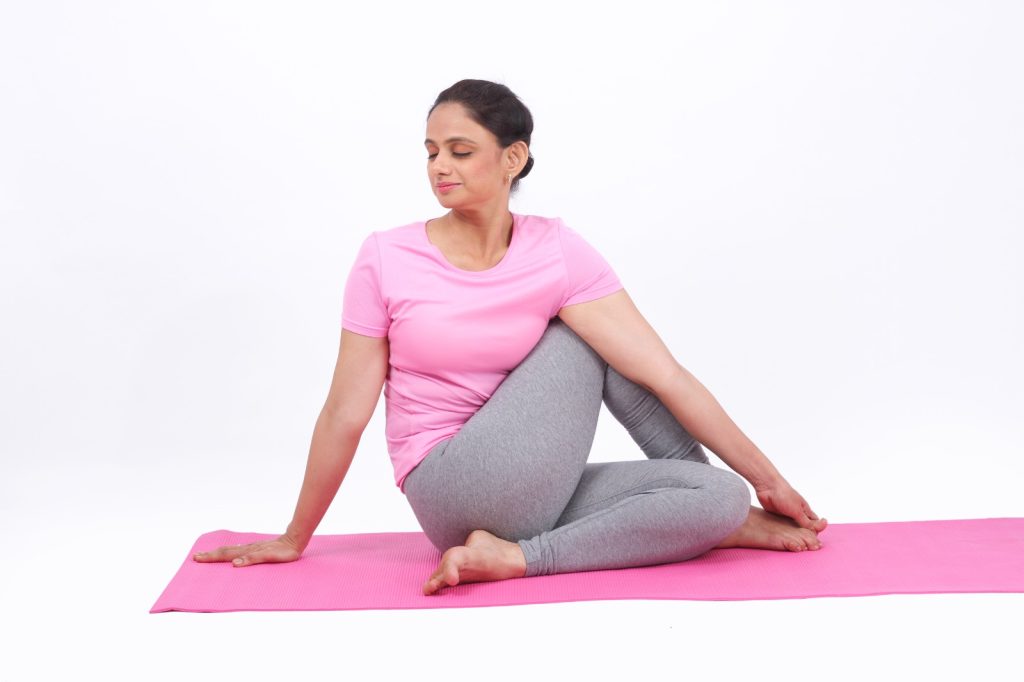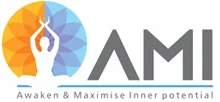India has the dubious distinction as the Diabetes capital of the world due to the consistent increase in the disease. An ICMR study indicates that there are currently close to 80 million people with diabetes in India and this number is expected to increase to 135 million by 2045. This makes a substantial population at risk of cardiovascular disease, stress, blindness, kidney damage and loss of sensation in fingers, toes etc.
This high incidence is attributed to a combination of genetic susceptibility plus our preference for high carbohydrate, fried and sugary foods and a low-activity lifestyle.
Diabetes is an internal imbalance (metabolic disorder) and not an illness due to an external bacterial or virus attack.
Yogic practices for Diabetes work externally and internally bringing good health and harmony to your body. In short building a strong foundation of wellness!
Sage Patanjali in his eight-fold path of yoga laid down the Yama’s and the Niyama’s as the universal rules of discipline and social conduct. Of the Yama’s- Brahmacharya (moderation in all aspects of our lifestyle) and Aparigraha (non-covetousness, non-greed) and of the Niyama’s – Santosha (contentment with what you have) and Tapa (self-discipline) are relevant here.
Aparigraha is also one of the key teachings in the Bhagavad Gita, in which Sri Krishna says ‘Let your concern be with action alone, and never with the fruits of action. Do not let the results of action be your motive, and do not be attached to inaction.’ In short learning to ‘let go’ will rid you of anxiety and stress.
Our AMI yoga classes have interesting anecdotes of students whose blood sugar was not reducing despite a disciplined diet and regular yogic practices. The root cause was found to be stress and anxiety. Stress is associated with poor control of diabetes and complications such as diabetic neuropathy (nerve damage). A mind-set change merged with appropriate yogic practices for diabetes facilitated gradual lowering of their sugar levels.
Did you know that the scope of yoga covers lifestyle, diet, mindfulness, exercise, massage to build a foundation of wellness?
Above experiences have been leveraged to curate a set of special yogic practices for diabetes, beyond the common practices of asanas, pranayama and meditation!!
Overview:
- Diabetes occurs due to zero (Type -1 diabetes) or insufficient (Type-2 diabetes) production of insulin hormone in the body. Statistically, around 90% of diabetic patients fall into the category of Type-2 diabetes which can affect the eye, kidneys, nerves, and even the heart.
- Asanas (postures) help in stimulating the pancreatic cells, thereby improving insulin secretion. Also , the muscular movements enable in lowering blood sugar levels by increasing glucose utilization.
- Twisting asanas stimulate the digestive system and other organs, helping relieve blocked energies. Asanas induce relaxation, which also plays a key role in the healthy functioning of the internal organs of the body.
- In rats, high cortisol levels lead to what researchers call “food-seeking behaviors” (the kind that drives you to eat when you are upset or stressed). Yogic practices for Diabetes encourage self-awareness, which can help promote healthy eating habits.
Yoga should be learned under the guidance of a qualified yoga professional. Consult your physician before you start with these yogic practices for diabetes management.
Yogic principles that can be used for Diabetes management:
1. Psychological conditioning:
- It can be mentally hard for a Diabetic to be off sugar and a bit of reverse psychology helps. Example: “saying it will be difficult to be off sugar” by a family member may prompt the patient to wean themselves off sugary foods.
- Motivation to maintain a healthy lifestyle, with positive support from family / friends.
2. Emotional conditioning “Diabetes distress”
- Positive interventions like gratitude, kindness to overcome anxiety. Being contented (santosha / happiness) will alleviate stress which can be a precursor for Diabetes.
- Physical activity and relaxation techniques. Stop treating diabetes as a burden (acceptance).
- Group yoga practices fosters a sense of connection and cohesiveness that motivates and inspires you to continue your yogic practice.
3. Diet.
- Diligent practice of the Niyama’s detailed above – Tapah (self-discipline) and Brahmacharya (moderation) fosters mindfulness in eating. Overeating may be a trigger for diabetes as it directs energy away from value added activities.
4. Clapping and Massage.
- Clapping helps improve blood circulation in the body. Clapping activates the acupressure points on your palms. Sit comfortably, open the arms wide and clap. Do not forget to breathe deeply!
- Foot and hand massage with coconut oil helps improve oxygen-rich blood flow to the body extremities. This helps manage diabetic neuropathy (loss of sensation in fingers and toes) an outcome of diabetes. Ensure you massage every finger/toe and the area in between. A safe way to do it is seated in the bathroom prior to your bath, which will prevent any accidents due to slipping. Massage also triggers release of Endorphins helping raise your pain threshold.
5. Shat kriyas and Mudras
- Ancient texts like the Hatha Yoga Pradipika describe purification practices (kriyas) like Shankha-prakshalana (intestinal cleansing). It is believed that the cleansing of the entire gastro-intestinal tract renews and rejuvenates the body and enhances Insulin production.
- Practices like Uddiyana bandha a mudra practice (abdominal lock) or Agnisara Kriya which involves contracting and expanding the abdomen creating negative pressure. It is believed that the above practices enhance pancreatic function.
- Tadagi Mudra (Tadagi means a ‘pot’) It is a powerful technique with benefits especially for your abdominal region. Avoid in case of issues like hernia or abdominal surgeries. (Photo: Kalpana Kumbla)
- Lean forward and grasp your big toe with thumbs, index, and middle fingers.
- Inhale slowly and deeply expanding your abdominal muscles to their fullest extent.
- Hold your breath inside for a comfortable duration.
- Exhale slowly and deeply while relaxing your abdomen. Repeat 2-3 times.
- With regular practice the hold duration of the mudra can be increased.

6. Guided meditations: This practice is for stimulating the Manipura chakra. As the seat of digestive fire, this Chakra regulates the function of the Pancreas and digestive organs. An excellent yogic practice for Diabetes – https://learn.amiyogaglobal.com/courses/guided-meditation-and-yoga-nidra/contents/65198f43394ba
7. Bhastrika Pranayam (Bellows Breath): The practice tones the digestive system. Avoid in case of hypertension, heart disease, stroke/epilepsy or eye issues.
Technique:
- Take a deep breath in and breathe out actively through the nose and immediately breathe in with the same force.
- Active inhalation results from fully expanding your abdominal muscles and active exhalation from firm contraction of your abdominal muscles.
- Continue in this manner counting 10 breaths, this is one round. Practice 3-4 rounds.
8. Restorative practices (Asanas) –Beginners are advised to start with the adaptations which are simpler and move to the original technique as you gradually improve flexibility. Hold the poses for approx. thirty seconds to one minute for better benefits.
A. Warmups: Before commencing the practices do some warmups (6-8 repetitions) like curling and stretching toes, ankle /elbow/knee bends, shoulder shrugs, neck rotations etc.
B. Surya Namaskar or Sun salutation reduces stress by bringing awareness to the mind body and breath. Surya Namaskar gives good compression on the abdomen and overall stretch with its backward and forward bending postures. It improves flexibility across the body enhancing oxygenation at the muscular and cellular levels. Beginners can start with 2-3 sets and then progress to 6 sets or more. You have 2 options – the classical standing or the chair versions.
- Standing Surya Namaskar: https://www.facebook.com/amiyogaglobal/videos/585872508413590/
- Chair Surya Namaskar: https://fb.watch/oaKdc6orOA/?mibextid=Nif5oz
C. Kati Chakrasan (Trunk twisting) This asana tones the neck, shoulders, waist, back and hips. Avoid in case of spinal injuries. (Photo: Heena Shah)
Technique:
- Keep legs about 2-3 feet apart. Raise both the arms to chest level with palms facing each other.
- While exhaling, twist the body towards the left with the right palm touching the left shoulder. The left hand hugs your body from the back around the waist. Come back to centre with inhalation. Repeat on the right side. Practice 4-5 rounds.

D. Vakrasan (The Twisted Pose) Tones the spinal nerves and the abdominal organs. Avoid in case of hip, shoulder or neck issues or recent abdominal surgery. (Photo: Heena Shah)
Technique:
- Bend your left leg with the foot resting on the mat keeping your right leg straight.
- Twist your trunk towards the left and bring the right hand over the left leg to hold the left toe or ankle. The neck is twisted from the left side, in line with the trunk. Place the left palm behind. Relax the shoulders
- To release inhale and come to centre. Repeat on the right side.
Adaptation: Hug the knee in case of difficulty to hold the left toe or ankle (see pic)


E. Ushtrasan (camel pose): A backward bend that gives a good stretch to abdomen and pancreas. Avoid in case of knee or spinal issues. (Photo: Kalpana Kumbla)
Technique:
- Kneel with knees and feet shoulder-width apart. Place palms on the back of the hips.
- Inhale and bend backwards. Try to touch your palms to your heels.
- Beginners can alternately rest one palm on the heel and raise the other upwards and alternate (see pic).
- To release exhale and slowly come back to centre.
Adaptation: Place palms on the back of the hips, extend shoulders and elbows back (see pic).

F.Yogamudra: The practice massages the abdominal organs and stretches the back, and is used to awaken the Manipura chakra. Avoid in case of spinal or abdominal surgery , BP, and heart issues. (Photo: Kalpana Kumbla)
Technique
- Sit in padmasana or sukhasan. Take your hands behind to hold left wrist with the right hand and let the elbow tilt inwards. Alternately place fists on either side of the navel (see pic)
- Inhale slowly, exhale completely, push fists into the abdomen and keeping your chin forward, bend from the hips with slow exhalation. Let the forehead touch the floor if possible. Relax your elbows and shoulders. To release inhale and come up.
Adaptation: Keep hands straight and stretch your spine and bend forward. A secret is to stretch your spine forward with your chin thrust in front.

G. Uttana Vakrasana (supine twisting pose): Stimulates the abdominal region, thyroid gland, and improves metabolism. Avoid in case of spinal or abdominal issues. (Photo: Heena Shah)
Technique
- Lie on your back with hands on either side of your head. Bend both your legs and place feet on the mat, little distance between knees and feet, take both your knees to the right and head to the left.
- Release and repeat on the opposite side.
Adaptation: Place interlaced fingers beneath your head. Keep both legs together and twist the lower body to one side. Repeat on the other side.

H. Dhanurasana (Bow pose): The entire alimentary canal is reconditioned by this asana. Avoid in case of heart issues ,high BP, hernia or ulcers. (Photo: Heena Shah)
Technique
- Lie on your abdomen with legs and feet together and hands beside the body.
- Bend the knees and with both hands hold both ankles, inhaling, arch the back, first lifting the thighs and then the chest and head up in the final pose. The abdomen supports the entire body.
Adaptation 1: A rolled blanket or towel is helpful to lift the thighs up. (see pic)
Adaptation 2: Raise the upper body using forearms and fold legs at the knees. As your thigh and upper body gain strength gradually move to the original asana.

Yogic practices for diabetes have the potential to prevent progression of the disease and if started early, maybe even effect a cure (Bhavanani, 2013). Manage your blood sugar levels and you decrease your risk of diabetic complications such as heart attack, kidney failure, and blindness.
Overall, with no appreciable side effects and holistic benefits, yogic practices can be done by even ill, elderly or disabled individuals. Being safe, simple and a cost-effective therapy, it should be considered as a beneficial accessory for better management of diabetes.
Remember, Yoga is not just focus, mindfulness and tranquillity only when you are on the mat, but carrying this state of being off the mat too.
A yogic lifestyle enhances our ability to build a solid foundation of wellness and resilience!
To learn more, get in touch with us at https://www.amiyogaglobal.com
Authors: Shyamala Salian, Megha Dhargalkar.
Asana photos : Heena Shah and Kalpana Kumbla.
Meditation: Darpan Khudadabadi
References:
- Asana, Pranayama, Mudra, Bandha by Swami Satyananda Saraswati
- https://medlineplus.gov/healthrisksofaninactivelifestyle.html
- Yogajournal.com>health> women’s health
- https://www.futurelearn.com/info/courses/musculoskeletal/0/steps/25161
- indianyoga.org/
- https://globalwellnessinstitute.org/what-is-wellness/
- https://pib.gov.in/newsite/printrelease.aspx?relid=165641
- https://www.emjreviews.com/diabetes/article/psychological-aspects-of-diabetes/



